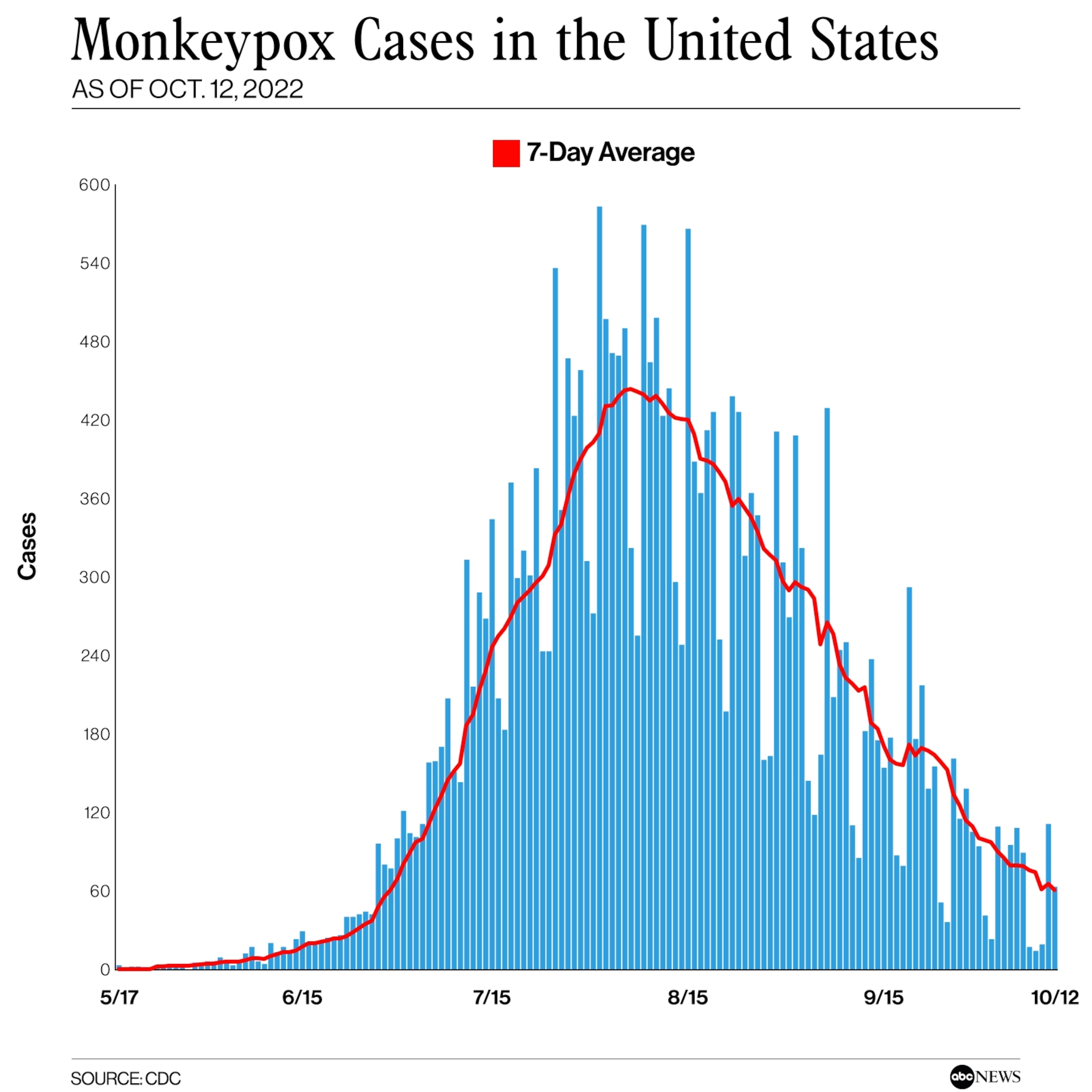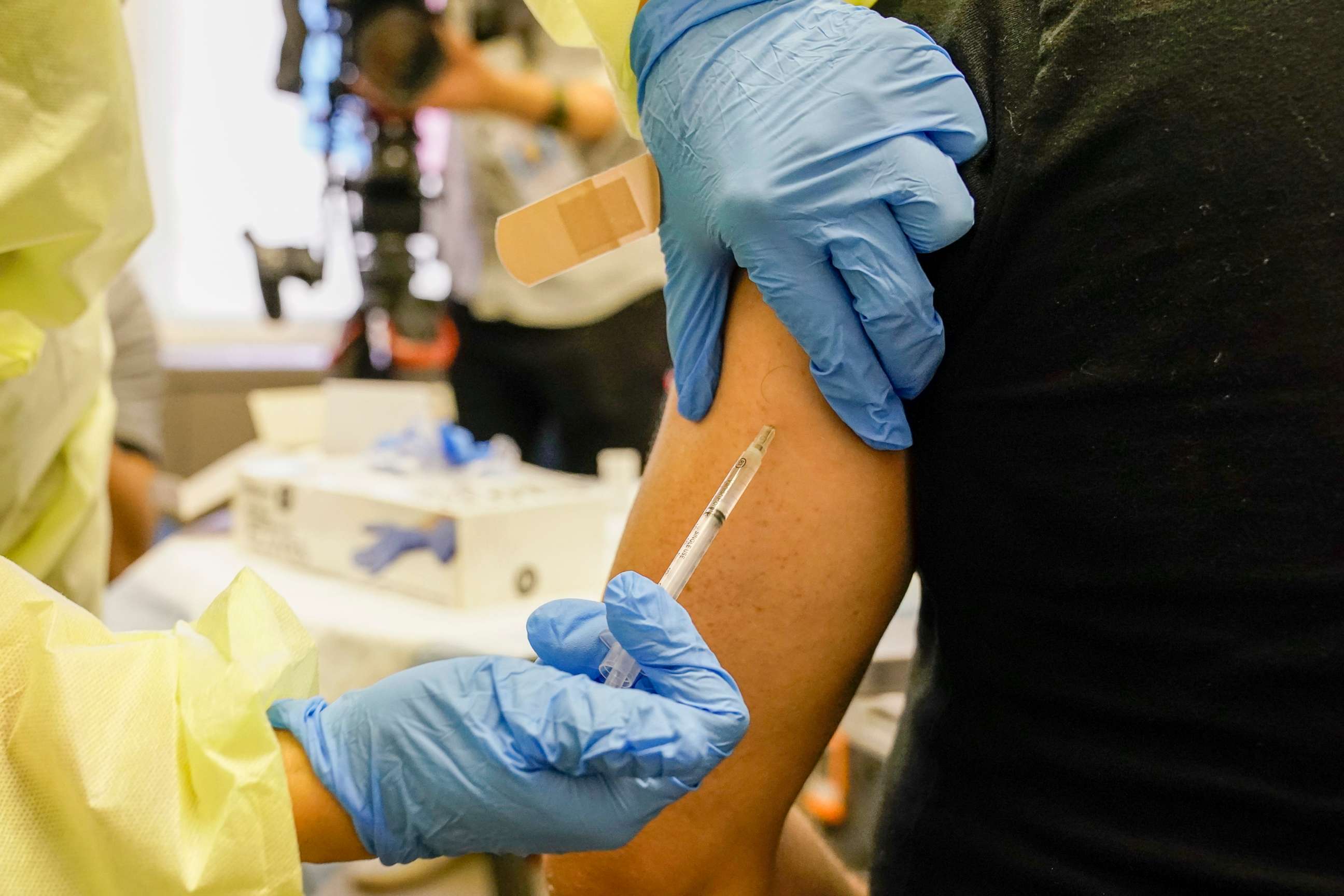Monkeypox cases in US fall, hit lowest level since June: CDC
The average is down from a peak of 443 in August, data shows.
Monkeypox cases are continuing to decline in the United States as the outbreak keeps showing signs of receding.
As of Oct. 12, the U.S. recorded a seven-day average of 60 cases, according to the Centers for Disease Control and Prevention.
This is the lowest average recorded since June 29, which is right around the time that infections began climbing. It's also down from the seven-day average of 443 cases recorded in early August, CDC data shows.
Trends seen in cities across the country mirror those nationwide.

In New York City -- the epicenter of the outbreak -- the seven-day average has fallen to 2 as of Oct. 11 from the city's Department of Health & Mental Hygiene. This is a sharp decline from the peak of 73 recorded in late July and early August.
Similarly, in Los Angeles, the seven-day average sits at 5 as of most recent data from Oct. 3, according to the Los Angeles County Department of Public Health shows, which is the lowest since early July. It's also a marked drop from the peak of 41 in late August.
Dr. Shira Doron, an infectious disease physician and hospital epidemiologist at Tufts Medical Center in Boston, told ABC News the outbreak has fallen for a few reasons, one being behavioral changes.
The outbreak has primarily been concentrated in men who have sex with men, a group that includes people who identify as gay, bisexual, transgender and nonbinary, although health officials have said anyone -- regardless of sexual orientation -- is at risk if they have direct contact with an infected person.
Surveys have shown that high-risk groups listened to public health advice and made changes such as reducing the number of sexual partners and anonymous sexual encounters.
"There were really substantial changes among men who have sex men," Doron said. "High proportions said that they had made significant changes in their behavior."
Another reason, she said, is vaccines. As of Oct. 11, more than 906,000 doses of the JYNNEOS vaccine -- the only vaccine approved by the Food and Drug Administration to prevent smallpox and monkeypox disease -- have been administered across the U.S., according to the CDC.
To increase the number of JYNNEOS doses available, the FDA authorized a new strategy in August to inject the vaccine intradermally, just below the first layer of skin, rather than subcutaneously, or under all the layers of skin, allowing one vial of vaccine to be given out as five separate doses rather than a single dose.
Doron, however, said it's too soon to claim victory over the outbreak and added that it's important for those who are at high-risk to keep taking precautions.

"As we have learned and seen with COVID, case numbers have a certain shape and what goes down can come up again," she said. "So, we can't rest on our laurels and think that's it over."
"The public can relax to a much greater extent than public health officials and hospital officials," she added.




